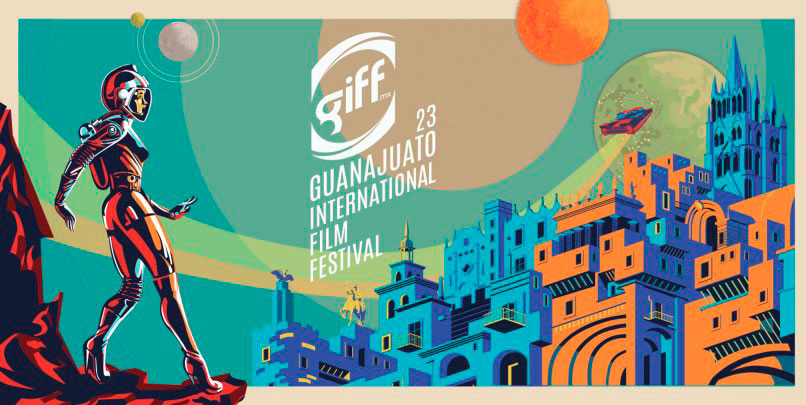Paper Boats
Official Selection Mexican Feature Film
Dir. Yago Muñoz
The Richter Scale says: When a movie begins with the vomit-inducing voice of Donald Trump (who unfortunately is President of the United States) reciting one of his xenophobic and racist speeches, one knows they’re about to see something that criticizes some aspect of his mandate, and if that movie is Mexican, one can be sure it will criticize his immigration policies. Paper Boats begins with Jorge (Pedro Damián), a lonely man who was once a border smuggler, walking along the border between the United States and Mexico, where the words of this unpleasant man are heard in the background. From there we meet Alma (Alexandra Merkman), Jorge’s daughter, a woman who has lived in New York for many years and has three children: Carolina (Isabella Sky), Tomás (Max Levi) and José (Lior Alexander) and works every day to raise them, but now she has to resolve his state of residence, since she entered the United States illegally, and her children may be taken away from her. To avoid this, Alma sends her children with Jorge to his farm filled of chickens. Jorge does not speak English, the children do not speak Spanish and Jorge does not have anything in his house that the children need (he even gives them coffee to drink because he has nothing else) and what he wants most is to return them to his mother, but little by little, he becomes fond of them.
This film is, mainly, an excuse for Pedro Damián to make a film with his grandchildren (yes, the three children are his grandchildren in real life), since he almost never sees them and his daughter Alexa Damián (who produced the film) decided to create a vehicle so that her father could create a bond with his grandchildren. These interactions are very natural in how they evolve and how this man is understanding these children, although he does not always understand what they say, and the children have distinctive personalities even when they join together in chaos (in particular Carolina, the eldest, who seizes a moment to take command and tell her grandfather what her brothers need). The filmmaker is actor Yago Muñoz, who also wrote the script and is directing for the first time, which at times is obvious, since his focus is mainly on making his actors look good, but he also manages to capture the atmosphere of this town in Sonora and the different places that Jorge frequents: for example, there are several sequences in a dining room that Jorge attends often where he uses the phone and here many men gather to watch soccer, and there we meet a young woman with a father whom Jorge helped cross to the other side and who becomes his accomplice in caring for the children.
It is a story that celebrates family, something that is under threat for these people who cross the border and are now being separated and detained in … we will call them what they are, concentration camps! Family is typically the strongest bond a person has, be it their parent, child, or even grandparent (even if one has never seen this family member before), it is a bond that survives many things and one that, unfortunately, in certain cultures is not valued as it should. Paper Boats is the how a woman sought to create a family bond between her father and her children, a bond that will be very important for this family and something to inspire the audience to look for their family and create that bond that no politician can break (no matter how many times the son of a ___ says he can do what he wants).
Prince of Peace
Official Selection Mexican Feature Film
Dir. Clemente Castor
The Richter Scale says: This movie is going to confuse many (it also confused us in its early stages). It begins with a character named Daniel who visits a doctor who examines him and asks him why he had not come to see him. From there we see different images of this character interacting with his brother, fighting, remembering through photographs (in a sequence that presents us still images), interacting with a girl who asks him why he likes her, finding a corpse in a swamp (from what we understand to be a suburb in Mexico City), and many segments of landscapes and a lot of silence that at times confuse with characters that do not introduce themselves and that we do not see enough of to build a connection, but that, if you have the patience to digest it, you can find what the film seeks to convey.
The synopsis presented by director Clemente Castor says: “What is it that unites us and what separates us? Maybe, the answer is the same thing. The body revealing itself to the mind. The mind to space. The space, a house without walls from which its inhabitants fail to leave. The confinement in an environment that seems open. People who are like objects of a place. A place like a body from which they cannot leave. The body, group of membranes, tissue that contains us. The fear that it will stop containing us. The skeleton of a giant appears.” This theme seems to be present in the idea that this character is suffering from migraines, although the doctor cannot find out why, and that the spaces in the swamps seem to cover him up. The film has a very gray aesthetic, which gives a sense of magical realism to the images, making the audience feel somewhat uncomfortable with what they see, and presents proverbs written in large golden letters, each meaning something different. But what does it mean? Could it be that the point of the film is that we will never know? That we are all in search of our prophets and what gives us peace? Those are some of the ideas we can think of what this could mean, but I’m sure everyone can think of a different idea if they see it for themselves.






